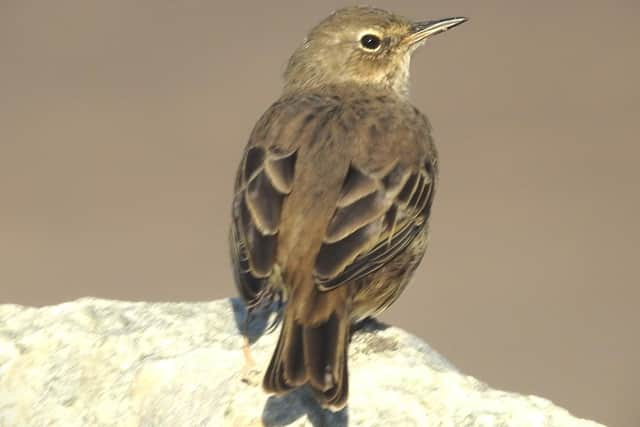On the Wildside: A small brown job


Of course, the trouble is that many of these (or at least some) are the rarities which get so-called twitchers very excited indeed. However, the most typical small brown jobs are not so rare and include say familiar garden birds like the dunnock or hedge sparrow which is an altogether under stated bird with a mono-tone rattling song and a call like an old ‘squeezy bottle.
The other common SBJ is a small bird that many readers will have seen up on the moors but probably never really noticed, and that is the meadow pipit. It does have a twittering song and a display ‘song flight’ in the breeding season (because it lives in open country with no elevated song posts to sing from) and it has a soft ‘tseep-tseep’ call.
Advertisement
Hide AdAdvertisement
Hide AdIn the next few weeks large numbers of these undistinguished small brown birds will be migrating through our region and just stopping off on the high moors and on reservoir shorelines. The bird pictured was on a seashore edge near Whitby in North Yorkshire in habitat that was more likely to hold its cousin, the rock pipit.


The latter is also relatively plain in its markings but is greyer and with dark legs. The meadow pipit has pale pinkish legs. So, there you have it, easy. Although I have to say that when I last went in the sea at Whitby I had pale bluish legs – so who can tell.
Despite being a typical SBJ, the meadow pipit is important as a key part of the ecological system of the moors, bogs, and heaths. Like another small bird typical these habitats, the skylark, the meadow pipit is a good ‘indicator’ of the state of our environment.
Therefore, when one-time very common birds become either localised or else rare, then we can assume there are bigger environmental problems like habitat loss and climate change impacts.
Advertisement
Hide AdAdvertisement
Hide AdProfessor Ian D. Rotherham, researcher, writer & broadcaster on wildlife & environmental issues, is contactable on [email protected]; follow Ian’s blog (https://ianswalkonthewildside.wordpress.com/) and Twitter @IanThewildside